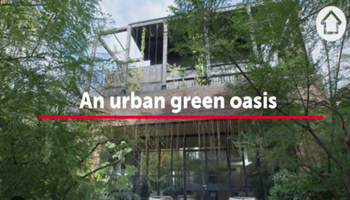Environment & Ecology
Context: Recently, Food and Agriculture Organization of the United Nations (FAO) launched report on Urban forestry and urban greening in drylands.
Key findings of the report:
- 35% of the world’s largest cities are built in the world’s drylands.
- It includes Cairo, Mexico City and New Delhi.
- They are home to 2 billion people, 90% of them in developing countries.
- Urban forestry and urban greening in drylands, these sprawling and crowded dryland cities face a high risk of social, environmental and economic crisis as they grow.
- They are becoming hotter and more polluted and face mounting pressure on their scarce natural resources.
- Weak infrastructure, making them among the most vulnerable places in the world to external shocks from the extreme weather events that climate change brings.
- More than half of the global population lives in cities and 95% of urban growth between now and 2050 is expected to take place in the global South.
- Thus, preserving and planting trees has been shown beneficial effect on the lives and health of the people.
About Green Urban Oases Programme:

- It was Launched in 2021 by FAO.
- It contributes to the FAO Green Cities initiative, which was launched in 2020.
- It aims to improve the resilience of dryland cities by tackling climate, health, food and economic challenges.
- To transform dryland cities into ‘green urban oases’ by strengthening their overall resilience to climatic, health, food and economic crises for the improved health and well-being of urban communities.
- It focuses on developing policy, technical capacity and outlines several pathways for transforming urban spaces by planting trees.
Key Recommendation from report:
- Community Level: Boosting participation and a sense of ownership, providing incentives to encourage tree planting and building capacity through environmental education, awareness raising campaigns towards public engagement.
- Government Level: Implementing robust policies for protection of urban greenery.
- Several initiatives including the Great Green Wall in Africa and the Three-North Shelter Forest Programme in China have been put in place to support the implementation of climate adaptation and mitigation strategies in dryland rural areas.
Source: FAO
Previous Year Question
Q.1) The “Miyawaki method” is well known for the: (2022)
- Promotion of commercial farming in arid and semi-arid areas
- Harvesting wind energy on coastal areas and on sea surfaces
- Development of gardens genetically modified flora using
- Creation of mini forests in urban areas
Q.2) Consider the following statements:
- The Climate Group is an international non-profit organisation that drives climate action by building large networks and runs them.
- The International Energy Agency in partnership with the Climate Group launched a global initiative “EP100”.
- EP100 brings together leading companies committed to driving innovation in energy efficiency and increasing competitiveness while delivering on emission reduction goals.
- Some Indian companies are members of EP100.
- The International Energy Agency is the Secretariat to the “Under2 Coalition”.
Which of the statements given above are correct? (2022)
- 1,2, 4 and 5
- 1,3 and 4 only
- 2,3 and 5 only
- 1,2, 3, 4 and 5














